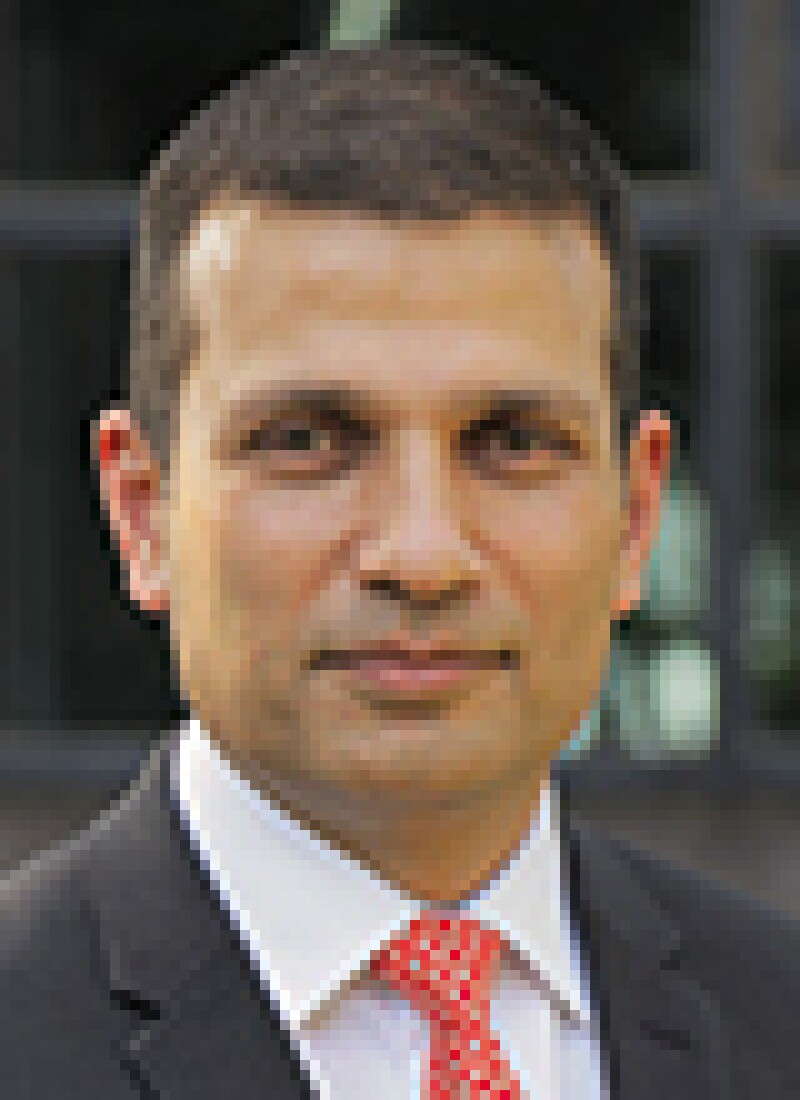There is no doubt that artificial intelligence (AI) is creeping into our lives slowly, but surely. From an outlier in the practical world for the past 60 years, AI is now driving developments in technology and business globally. In 2016, AI was identified as one of the technological breakthroughs that will drive the Fourth Industrial Revolution which is slated to significantly improve quality of life on a global scale while raising income levels. Recent numbers support this proposition as it is believed that, by 2020, AI will drive up to US$33 trillion of annual global economic growth. The speed at which AI will transform businesses will not only have an impact on customers/users but it will have a profound impact on how technology associated with the acceleration of innovation and disruption of businesses is created, protected and monetised.
A recent WIPO publication suggests that the business world is already progressing from theory to practice – this is reflected in the number of inventions that are being protected versus being published in scientific journals. Between 2010 and 2016, there was a fivefold increase in the number of patent applications relating to AI techniques as compared to scientific publication. Spearheading innovation seeking patent protection in AI is IBM, followed by Microsoft, with Alphabet, Bosch, Canon, Fujitsu, Hitachi, Panasonic, NEC, Samsung, Siemens and Toshiba rounding up the top global filers.
As companies embrace this new frontier, the US, the European Commission, France, China, Germany, Finland, the Nordic-Baltic states, and even the UAE and India have published or will soon publish policies/initiatives and/or a roadmap to define objectives for the AI industry in their respective countries/regions. However, some questions remain unanswered, especially in areas of data security and patentability of AI inventions which need our attention.
Global trends in AI
A simplistic understanding of AI is that it is technology that can emulate human capabilities and performance and, in some cases, technology that will replace people even in the execution of non-routine tasks. Its existence in our lives is impacting – directly and indirectly – each and every realm of human existence, from cars and medicine to agriculture and beyond. Based on its impact and application, AI is classified as weak AI, or technology that behaves intelligently, but does not have any kind of consciousness about what it is doing; strong AI, or technology that is so developed that it can behave intelligently by thinking as a human; superintelligence or technology that can even surpass humans.
|
|
Strategic thinking is the call of the hour if we want to successfully tackle the forces of AI disruption and innovation that will shape our future |
|
|
The underlying AI techniques involve machine learning, logic programming, fuzzy logic, probabilistic engineering and ontology engineering with the first three techniques seeing maximum growth in terms of patentable innovations. WIPO published data shows that machine learning dominates all other techniques, representing 89 percent of patent filings and 40 percent of all AI-related granted patents. From 2013 to 2016, patent filings for machine learning also grew by 28 percent indicating that it is an area of strong focus by businesses. In the same period, patent filings for fuzzy logic grew by 16 percent, and for logic programming by 19 percent. In the AI functional application space, computer vision, speech processing and natural language processing are the top three areas of patenting. Here, IBM appears to be focusing on innovation in natural language processing rather than other functional applications, while the other top 20 patentees focus primarily on innovation in computer vision. However, between 2013 and 2016, the functional applications with the highest growth rates were AI for robotics and control methods, which grew by 55 percent a year.
Viewing innovation in AI applications by industry, transportation leads the way in the overall results and also in terms of the highest growth rates in AI-related patent applications – 33 percent annual growth between 2013 and 2016, spearheaded by Toyota and Bosch. In the same time period, patent filings in AI applications related to telecommunications grew annually by 23 percent with the largest contributions coming from Microsoft and Samsung.
While IBM and Microsoft are leading patenting activity in AI-related innovation, the overall numbers game is being won by Asian companies. Fourteen of the top 20 companies filing AI-related applications are based in Asia (12 from Japan and two from China) and only three are from the US. For the past five years, China has led the world in the number of first patent filings in AI, followed by the US and Japan. However, the China numbers do not really give an accurate leadership story. WIPO estimates that 96% of Chinese applications relating to AI are filed only in China which is extremely low in comparison with Japan (40 percent) and the US (32 percent). Thus, on a global scale, applicants from Japan and the US are the largest filers as 40 percent of first-filed Japanese applications and 32 percent of first-filed US applicants are also filed in other jurisdictions. US companies Alphabet, Apple and Microsoft are organisations with the largest appetite (and cash reserves) for acquiring AI technology and between them, in 2017, they acquired almost 40 companies relating to AI, from a total of 103 acquisitions.
Data concerns
AI-related inventions have a vast range of applicability across industries – from automobiles to medicine to agriculture etc. – which are set to impact our lives in several ways. Underlying all AI technology is data, and reliance on data raises concern around security and privacy. Keeping data secure will be a big challenge because as one author surmises "if someone hacked in and changed a thousand numbers, how would people know? What would it cause?" This is critical in an era where social media can influence elections, reinforce undesirable behaviour, or exacerbate prejudice.
However, more than security, IP practitioners are worried about data privacy. There is a balancing act in play because in order to benefit from AI, users must be willing to give up privacy. But how much is enough? As we upload information on social media sites, and if they told us that they would use that data for our benefit, such as finding medical irregularities, would we agree? But, if they do it without consent to bolster their data set for some other analytics/statistics, is that acceptable? Should transparency in AI applications, therefore, be regulated through specific laws or under the existing GDPR (the EU General Data Protection Regulation) and other privacy laws? These questions require debate because how data is used and safeguarded will have a big impact on the pace of AI development.
Global subject matter eligibility standards for AI inventions
But raising the data privacy/protection bar is not the only problem that AI technology brings. The main issue – from an intellectual property/ patent perspective – is whether AI inventions can/should be considered as patent eligible subject matter. A look at patent laws of major jurisdictions sheds some light on the current state of affairs.
In the United States, the global leader in terms of AI inventions, such inventions are judged under Section 101 which, by way of recent judicial interpretation, has set a stringent standard for subject matter eligibility requirements regarding software and computer-implemented inventions. Since the Alice decision in 2014, a heightened test is being applied for inventions directed to a patent-ineligible concept, which in the case of AI inventions would be a computer-related invention. Under Alice, the final determination focuses on whether the claimed elements provide any inventive concept that would transform the patent-ineligible concept invention into a patent-eligible application. A well-understood, routine, conventional activity that requires a generic computer to perform generic computer functions is not patent eligible under Alice (and its successors) and AI inventions need to overcome this hurdle to be patent eligible.
In Europe, computer programs are not protectable. However, if the claimed invention causes a further technical effect, such inventions are patent eligible. The recently published Guidelines for Examination of "Artificial intelligence and machine learning" by the EPO, provide guidance on how to assess whether an AI-related invention has the requisite "technical character" to be patentable. Japan, China and Korea follow a similar fundamental principle in assessing eligibility.
In Japan, a software invention is patentable if its information processing aspects are required to be "specifically implemented by using hardware resources." In China, according to its 2017 examination guidelines, a "computer program-related invention" that has "technical characteristics will not be excluded from patentability." The Korean Intellectual Property Office guidelines state that computer programs per se are not patent-eligible, but they also "indicate that if computer software is claimed in conjunction with hardware, then the combination, the operating method of the combination, and a computer-readable medium containing the software that implicates the combination is patent eligible."
Thus, software inventions in these non-US offices are patent-eligible if they are implemented with or sufficiently tied to hardware. This position is viewed by some as an unnecessary broadening of the scope of patent eligible subject matter which, in their opinion, makes the patent subject matter eligibility standard outside the US less stringent than the Alice framework. Others, however, believe that the recent developments within the US indicate a convergence of the Alice framework and the European practice, particularly with respect to the Alice decision's second prong of determining whether the claimed elements provide any inventive concept that would transform the invention into a patent-eligible application.
In comparison with its peers, the Indian Patent Office, currently, has no published position on how it intends to deal with AI inventions. Historically, India has been ambivalent with respect to permissibility of computer-related inventions (CRIs). After a back-and-forth exercise, in 2017, the Patent Office finally chose an approach that is closer to the EU position and considers CRIs as patent eligible so long as the claimed inventive steps are tied to hardware and exhibit a technical effect. However, looking at AI through the lens of CRIs will not help inventors as it does not clear any of the ambiguities that are currently circulating on the eligibility criteria for such inventions. If India wants to be one of the leaders in AI, and the filing numbers indicate such potential, India must adapt its patent regime to ensure that the country remains an opportunity for innovators.
Inventorship and ownership
A quick word on inventorship and ownership is needed because as guidelines are being pondered (and set) for AI-based inventions, we must also set the criteria for who can be considered an inventor. This is particularly important because as we progress towards superintelligence, human involvement in the inventive process will reduce and machine involvement will increase. Therefore, we need to be able to answer the question as to whether a humanoid can be considered an inventor.
Tied to this concept is also the question of who has ownership for AI-related inventions. In cases where the inventor may not be human (assuming that this interpretation of inventor is accepted), does a humanoid inventor have the power to give consent for change of ownership so that a recognised legal entity can sue for infringement? Thereafter, in cases where patent infringement is established and the cause of the infringing act cannot be traced back to a specific human actor, how would the courts act? These and many similar concerns are now the subject of debates on the ambiguities of AI, not only in the IP context, but also in the context of criminal liability or civil tort liability.
As businesses lead the charge in creating and protecting AI technology we must pause, think and collaborate and develop a comprehensive and global framework for how AI technology should reshape our economic, social, cultural, and legal environments. Strategic thinking is the call of the hour if we want to successfully tackle the forces of AI disruption and innovation that will shape our future. The business leaders while leading the charge in their respective organisations must also work within their governmental organisations to answer the policy, social, economic and legal issues that the Fourth Industrial Revolution will bring with it.
Pankaj Soni |
||

|
|
Pankaj Soni has more than 20 years’ industry and legal experience. He manages patent litigation and prosecution in relation to electrical, electronic, computer and mechanical technologies. He has litigated matters for Fortune 500 clients before the Indian courts and the US federal courts. His expertise includes drafting applications, setting litigation strategy, handling the technical aspects of claim construction and carrying out infringement and invalidity analysis. He has also led client negotiations for litigation settlements and cross-licensing agreements. Mr Soni’s qualifications include a JD from Fordham University School of Law, as well as an MBA and an MSc in computer science from Illinois State University. He is admitted to practise in India, New York and New Jersey. |












